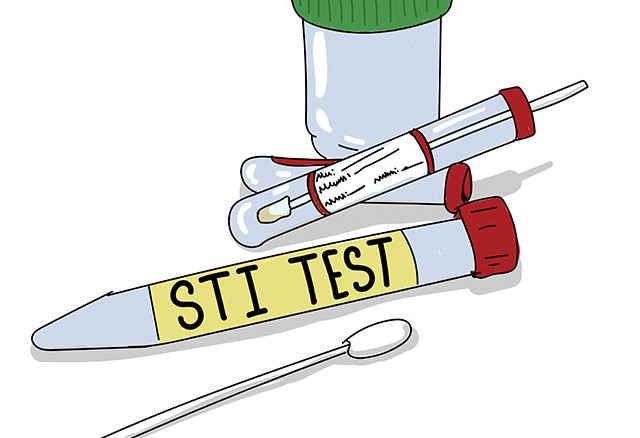
A 76% rise in sexually transmitted infection (STI) rates has been reported by the Health Protection Surveillance Centre (HPSC).
Chlamydia, gonorrhoea and genital herpes remain the most commonly recorded infections. Gonorrhoea had the highest increase at 159% compared to the rates recorded during the same period in 2022. HIV rates have increased by nearly 50%, according to the report.
STI rates are 57% higher amongst 20-24 year-olds than the next highest recording group. To protect ourselves and our partners it’s important to know the symptoms and how and when to get tested.
How do people get STIs?
STIs are passed from someone who is infected to another person often through sexual contact. They can be passed through unprotected oral, vaginal and anal sex, through the use of unwashed sex toys and from mother to baby during birth.
STIs can be passed through all types of unprotected sex, including oral and a person can have more than one infection at once. Some STIs, including herpes, can be transmitted through kissing and skin-to-skin contact. They cannot be transmitted by hugging, swimming, sharing cutlery or sitting on toilet seats. Some infections, hepatitis B, can be passed by sharing towels and other items which are contaminated by infected blood. Sharing needles and other drug-injecting materials can also lead to STI transmission.
Symptoms of commonly diagnosed STIs
Chlamydia is a bacterial infection which often presents asymptomatically. 50% of men and 7 in 10 women diagnosed with Chlamydia won’t experience any symptoms, according to sexualwellbeing.ie. For those who do present with symptoms, it can cause genital discharge and painful or uncomfortable urination in both sexes. Men may also experience bowel symptoms and swelling or pain in the testicles and, women can experience abnormal bleeding after sex or between periods and abdominal pain. If not treated, Chlamydia can cause infertility in women.
Gonorrhoea is a bacterial infection which can lead to infertility in women. Unfortunately, it is often undetectable in women as 7 in 10 show no symptoms while only 1 in 10 men are asymptomatic. In men, gonorrhoea can present all the same symptoms as chlamydia. Gonorrhoea is also treated with antibiotics.
Genital herpes is a viral infection which usually shows no symptoms. You are most likely to experience symptoms during your first infection. It can cause little red bumps around the genital area and flu-like symptoms. Anti-viral medication can ease symptoms but once infected, the virus remains in the body and flare-ups can be triggered by stress or illness.
HIV is a virus which weakens the immune system. Some people will experience flu-like symptoms when they first become infected but many will not experience sickness for years. HIV can be managed through medication, once a person with HIV is treating it effectively there is almost no chance of passing it on to their partners. Post-exposure prophylaxis is a medication which can be taken within 72 hours of coming into contact with the virus, it reduces the chance of becoming HIV positive.
Genital warts are caused by the Human Papilloma Virus (HPV). HPV is extremely common as 8 in 10 people sexually active people will be infected in their lifetime, according to the Marie Keating Foundation. There are over 100 different strains of the virus, many do not cause symptoms but certain strains can lead to cancer. The strains of HPV which cause genital warts do not cause cancer. Warts appear as little lumps around the genital area and they can be treated with cryotherapy and creams.
The when and where of STI testing
You should get tested if you begin to experience symptoms associated with STIs or if a sexual partner has been recently diagnosed with an infection. The HSE also advises getting tested when you have a new sexual partner.
The test you’ll need to take will differ depending on your symptoms. Blood tests can be used to test for viral and bacterial infections in men and women. Men will typically be required to provide a urine sample and sometimes a swab test will be administered. For women, a swab test will be taken from the inside of the vagina. Test can be adminstered by healthcare professionals or by yourself at home.
STI testing is offered free of charge from public STI clinics. Provisional STI tests (swab or urine) can be provided free of charge by a nurse at the DCU student health centres on the Glasnevin and St. Patrick’s campuses. A full STI panel (swab or urine and a bloodtest) can be provided for a €40 fee. Free home testing kits are available from the HSE and can be ordered through sh24.ie.
By Erin Murphy
